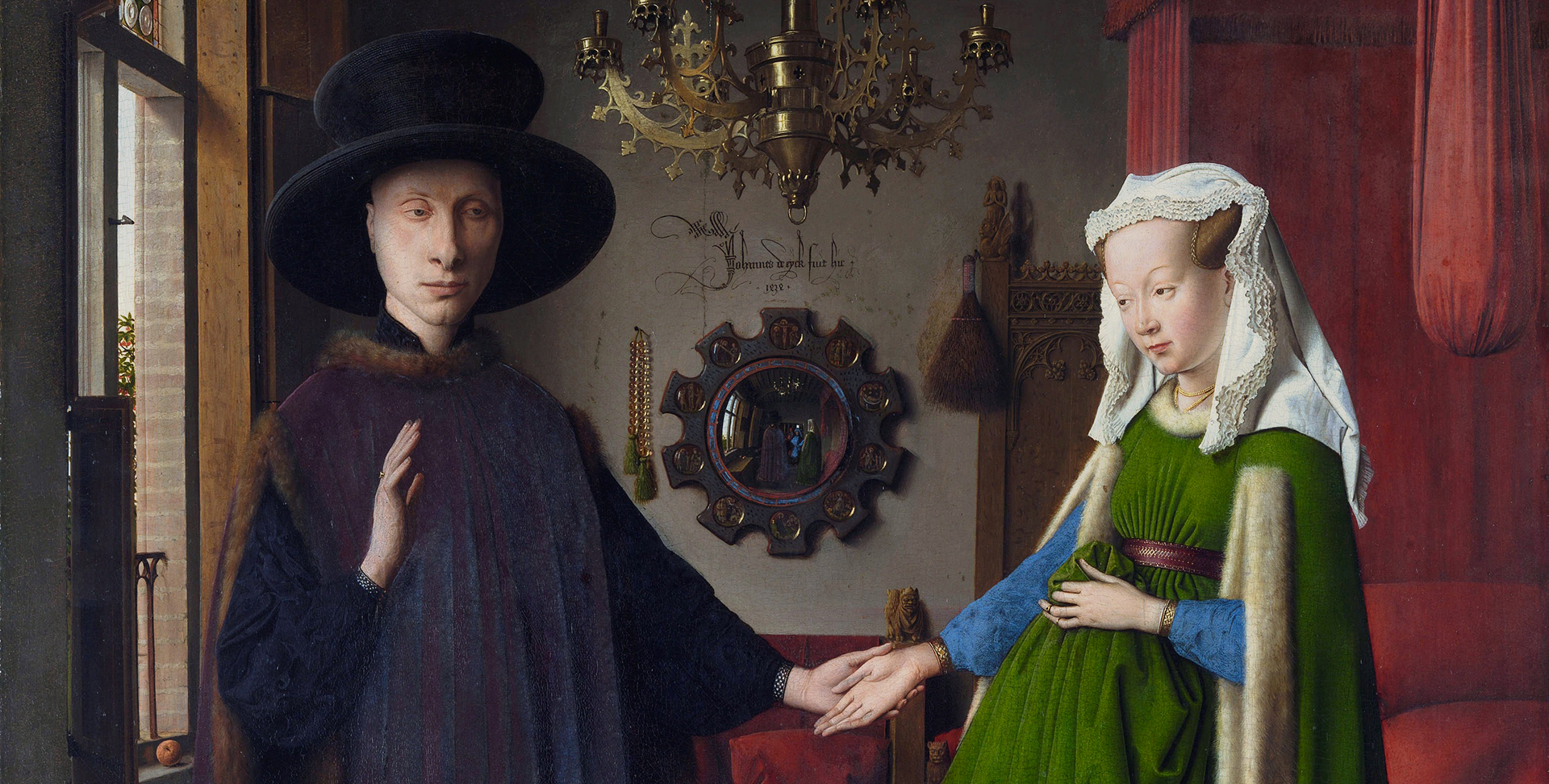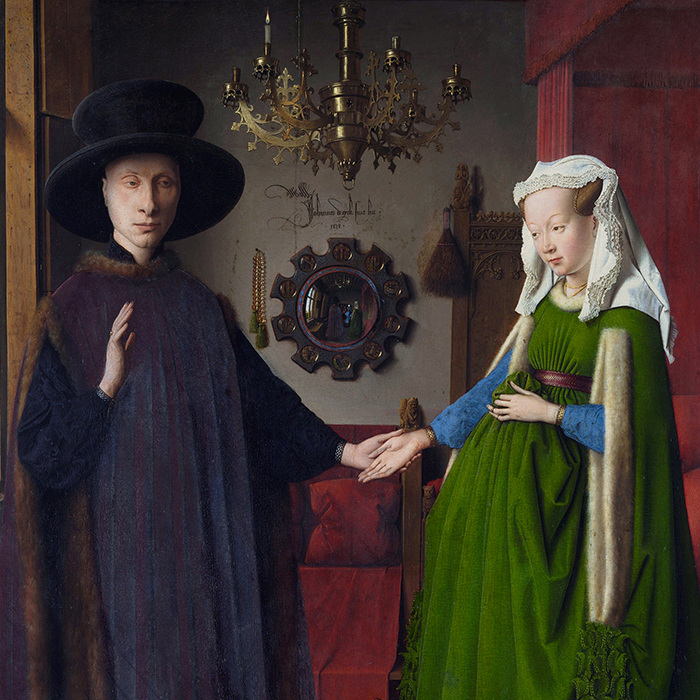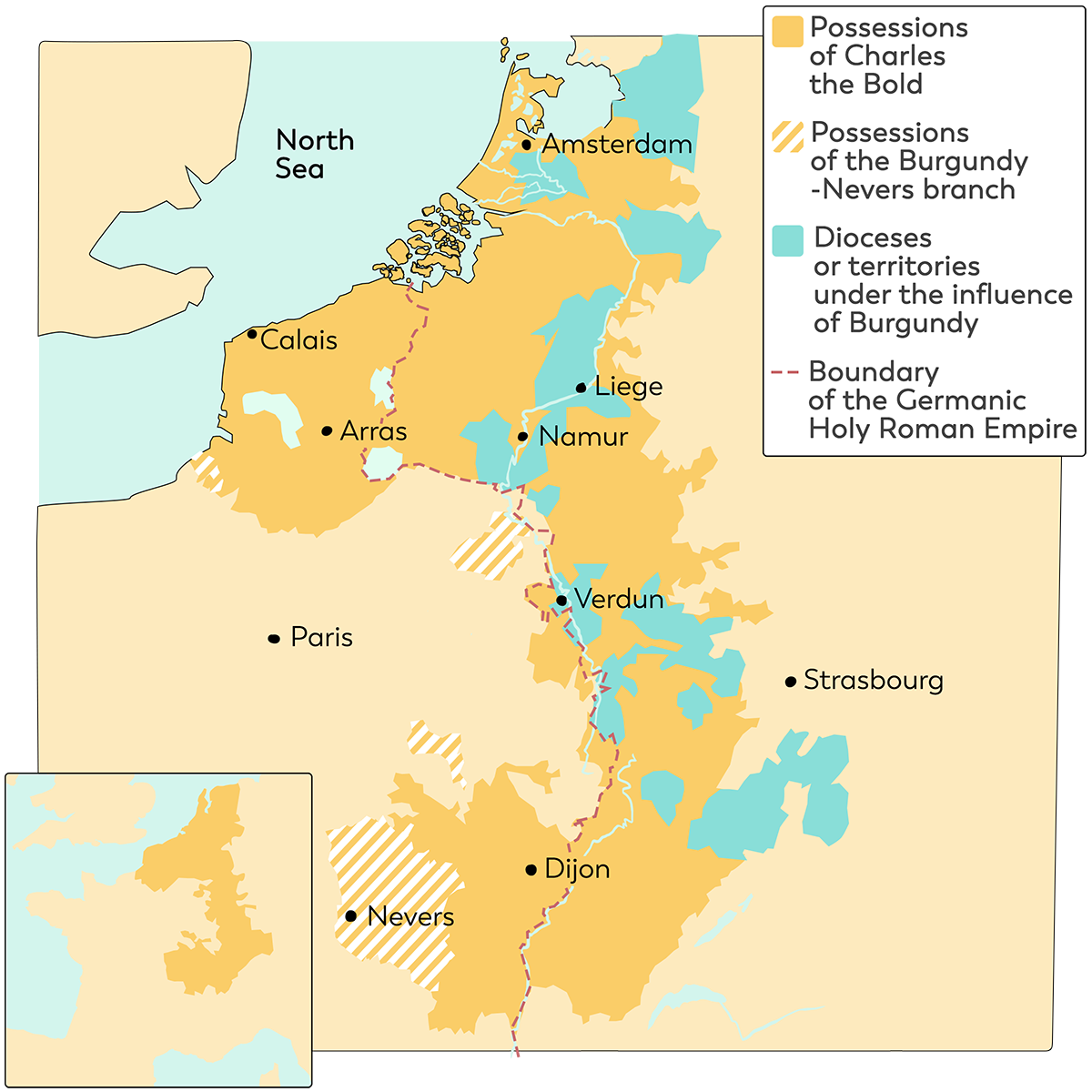




The Duke of Berry was from a royal line. He collected palaces and works of art from all over the world, and, more especially, manuscripts.

At the end of the Middle Ages, one court outshone all the others and those who wished to discover it had to go to Burgundy. Its Duke was one of the most powerful lords in Europe.
To demonstrate this, he organized sumptuous feasts in his palace in Dijon. And he could count on painters, sculptors, musicians, and scholars, all his courtiers, to be there.
The tombs of the Dukes of Burgundy retain the traces of this lavish lifestyle.
Their 82 sculptures commemorate the lives and mourn the deaths of the past Masters of the house.

At the end of the Middle Ages, the Dukes of Burgundy were extremely powerful and their court in Dijon was particularly refined and sumptuous.
One of the courtiers of the Dukes of Burgundy was the painter Jan Van Eyck, a highly successful painter from Flanders.
What lay behind his success? He departed from the Medieval tradition of idealized bodies and nature. Van Eyck observed the world around him and copied it realistically. This new concept of painting was termed “ars nova” (new art).
We can see this in his masterpiece Adoration of the Mystic Lamb. Look carefully, the details are important!

The Flemish painter, Jan van Eyck, introduced realism into painting, particularly in his famous work, Adoration of the Mystic Lamb. Here we are talking about ars nova.

Oil painting, perspective, and printing were some of the great innovations of the end of the Middle Ages.
Painters became interested in other subjects, as well as new techniques. The Portrait, abandoned at the end of the Antiquity period, came back into favour!
Click on each artwork to discover the characteristics of 15th century portraits.

Realistic portraits (of nobles, the bourgeois and the artists themselves) came back into fashion in the 15th century.
Interior decoration was not reserved to hanging portraits. The aristocracy were also enamoured with tapestries at the end of the Middle Ages, as they protected against drafts, and looked pretty spread out across the walls. It was a practical solution as well as being attractive!
They were made in Flanders and portrayed scenes of gallantry… Ladies were courted in scenes surrounded by “mille-fleurs” (a background of numerous small plants and flowers).
The Lady and the Unicorn is the most mysterious. If five tapestries in the series represent the five senses, what does the sixth one represent? The feelings of the heart?

Tapestries were used for practical but also decorative purposes, often representing scenes of gallantry.
At the end of the 15th century, the Middle Ages came to an end. But when and how did we move on to the Renaissance?
That’s a difficult question. You see, the transition took place gradually, over several decades. For a long time, Gothic art and the new developments of the Renaissance existed side by side.
But thinkers would in the end reject the Middle Ages and its art. This began over a long period, during which it was discredited, and lasted until the 19th century. However, this period had been a particularly creative one, inspiring us down to today’s generations!

Gradually, at the end of the 15th century, the Middle Ages (which were soon to be discredited) gave way to the Renaissance.

"*" indicates required fields